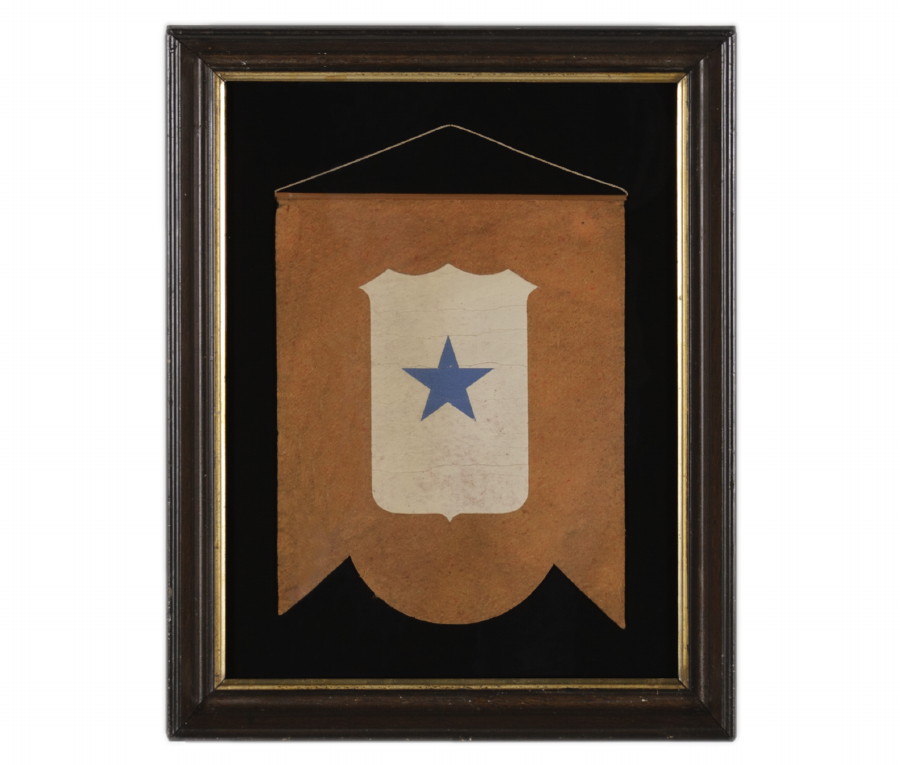
| |
WWI SON-IN-SERVICE WINDOW BANNER WITH AN ATTRACTIVE, SCALLOPED PROFILE, MADE IN KALAMAZOO, MI |
|
| Available: |
Sold |
| Frame Size (H x L): |
18.5" x 14.5" |
| Flag Size (H x L): |
11.25" x 8.5" |
|
| Description....: |
|
WWI SON-IN-SERVICE WINDOW BANNER WITH AN ATTRACTIVE, SCALLOPED PROFILE, MADE IN KALAMAZOO, MI:
The practice of displaying a son-in-service banner became popular during WWI (u.s. INVOLVEMENT 1917-18) and was continued or even increased during WWII. Families would display them in their front windows to signify the numbers of sons they had serving in the military during the war. There was one star for each child. The flags were traditionally composed of a rectangular white field with a blue star or stars, framed by a rectangular red border. Typically, if a soldier was killed, a gold star was applied over the blue. If other circumstances occurred, such as the soldier became a prisoner of war or missing in action, another color was used, such as purple or white. There was a whole list of colors to signify different statuses.
Because they were a new phenomenon, WWI examples, like this one, have more variability than those made during WWII and after. This particular banner has a single blue star to denote a single child in service overseas, which is typical, but the shape does not conform with the traditional style. Note the swag-style profile of the bottom edge and the shield-shaped profile of the white window inside it.
A manufacturer's stamp is printed on the reverse. It reads as follows: "Merchants Publishing Co.; Kalamazoo, Mich.; Patents Pending". I previously owned another example of a son-in-service banner with a tag from the same manufacturer.
Construction: White and blue pigment printed on red felt with a metal channel reinforcement at the top and a twisted gold rope for hanging.
Mounting: The paint-decorated frame with ebonized and gilded trim dates to the period between 1860 and 1880. The banner has been hand-stitched to 100% cotton, black in color, which was washed to reduce excess dye. An acid-free agent was added to the wash to further set the dye and the fabric was heat-treated for the same purpose. Spacers keep the textile away from the glazing, which is U.V. protective glass.
Condition: The red dye has faded to an attractive salmon color. There is minor pigment loss and minor soiling. |
|
|
|
| Collector Level: |
Beginners and Holiday Gift Giving |
|
| Flag Type: |
|
|
| Star Count: |
Other |
|
| Earliest Date of Origin: |
1917 |
|
| Latest Date of Origin: |
1918 |
|
| State/Affiliation: |
Michigan |
|
| War Association: |
WW 1 |
|
| Price: |
SOLD |
|
| |
Views: 2835 |
|
|
|

